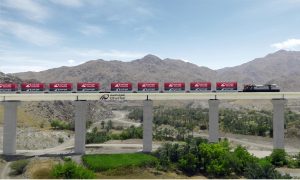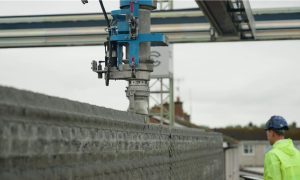Why Advanced Work Packaging can lead to double digit reduction in project costs
Exclusive: Paul Self tells MECN that Advanced Work Packaging can also boost productivity by 25%

According to a McKinsey study conducted with 48 troubled mega projects, poor execution was responsible for 73 per cent of cost and time overruns. The study also revealed that cost and timelines are frequently underestimated in the beginning to ensure that projects can secure investment and approval.
While data suggests that majority of projects will overrun, markets such as the oil and gas is renewing their focus on cost and schedule efficiency. This is driving new project management techniques and supporting technology to address the root cause. Advanced Work Packaging (AWP), for example, applies proven project management practices to construction and creates a more prescriptive approach to planning that leads to a more predictable project.
To discuss more on this approach, MECN sat down with Paul Self, EVP of Planning and Delivery for InEight who said: “AWP has become the industry’s response to pitfalls associated with traditional construction project management, however, AWP principles are really a common-sense implementation of proven project management practices.”
“One aspect of AWP is that it’s actually planned backwards. We start with when we want the project to be completed and then work our way, right-to-left instead of left-to-right, through the plan ensuring that each step in our plan is supportive of completion in accordance with the project objective. It’s like reading the last page of the book so you know how it ends before you even start chapter 1,” he explains.
Self added that AWP approach involved collecting insights from and setting expectations for engineering, procurement and construction teams to better leverage construction data and knowledge available to create the plan. This ensures that planners are not operating in silos, and that owners and contractors work collaboratively to determine the Path of Construction, he added.
“Driving work sequence backwards from construction to engineering for the whole project lifecycle can lead to a 10 per cent reduction in installed costs, while labour productivity stands to improve by as much as 25 per cent,” Self said, adding that projects become far more predictable because constraints can be identified upfront.
Furthermore, AWP also brings safety and risk benefits, Self said. For example, he said that bringing materials onsite requires substantial planning, while lacking the right equipment to start the job might cause a dip in productivity, and moving them around a complex and busy work site comes with its own risks.
“But, AWP identifies these constraints ahead of time to ensure work teams will always have the right materials for the job before it begins. This can help limit the amount of heavy equipment traffic mixing with foot traffic onsite and in doing so, allows teams to move around more safely,” Self explained.
He added that AWP also adds another dimension to the owner-contractor relationship. “A drive towards greater collaboration will see the owner facilitating cross functional participation from engineering, procurement/fabrication and construction. The contractor will be able to provide a much greater level of influence earlier in the project lifecycle – at a point in time when project expectations are being established.”
However, Self said that it’s not without its challenges. “As with any methodology, organisations will face adoption challenges, while the role of a product champion must not be understated. They take responsibility for the rollout and education of these practices across the project community.”
The second challenge is more digital in nature, he added. “The most comprehensive view of any project stems from a complete connection from inception to operation. Capturing that process digitally offers an unrivalled opportunity for efficiency.”
“But it’s fair to say many contractors and owners are not there yet. At a basic level, AWP can function with just a few building blocks: model visualisation, planning and scheduling, cost estimating and documentation. Even if an organisation is not that far along their digital transformation, they can still look to adopt AWP as the framework for their planning approach.”
Self said that AWP is about strengthening that owner/contractor connection by ensuring expectations are aligned between them and across functions.
“That is the goal of AWP – to keep the team in the field productive by defining the best Path of Construction for the project and removing the constraints that could slow them down. This benefits owners and contractors in any project environment. Leveraging purpose-built technology to support this process will make the investment worthwhile, and act as a catalyst for realising the benefits of an AWP approach to project planning and execution,” he concluded.





















